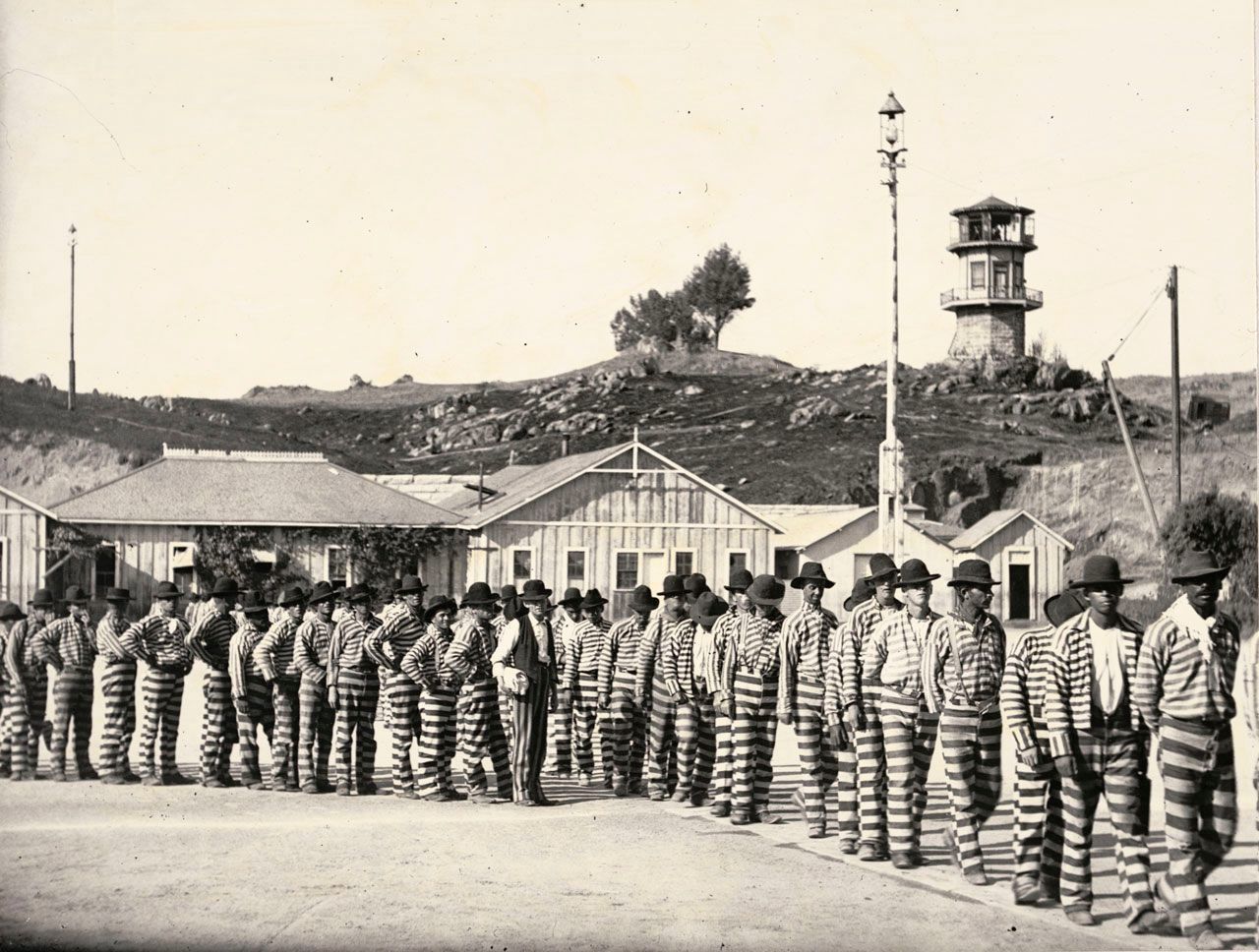Note
User Text: California’s first prison was the brig Euphemia kept in San Francisco Bay. While San Quentin was established in 1852, by 1861, the legislature recognized the need for another prison. In 1878, construction of Folsom Prison commenced. The Folsom site outside of Sacramento was near a river, rail transportation, and enough granite that prisoners brought in from San Quentin could quarry the materials needed to construct the prison, hard labor being their punishment. With its first two cell blocks complete, the prison officially opened in July 1880. It was the first U.S. penitentiary to have electricity when the Folsom Dam was completed, using prison labor, in 1893.
It took more than forty years to complete the granite wall enclosing the prison grounds. Since 1865, California code had dictated prisoners wear the striped uniform, but Folsom prisoners were by necessity permitted to keep the coat, vest, and hat worn on arrival, thus the variety of pork-pies, bowlers, and fedoras seen here. Not until the progressive prison reform initiatives of the 1910s and 1920s would the stigma of the stripes be addressed. Unlike many extant historical images, these men are aware that they are being photographed, and several look directly at the camera. Helping to narrow the decade of this image is the presence of the electric pole lights and incomplete section of granite wall, as well as the finished base of the guard tower.
